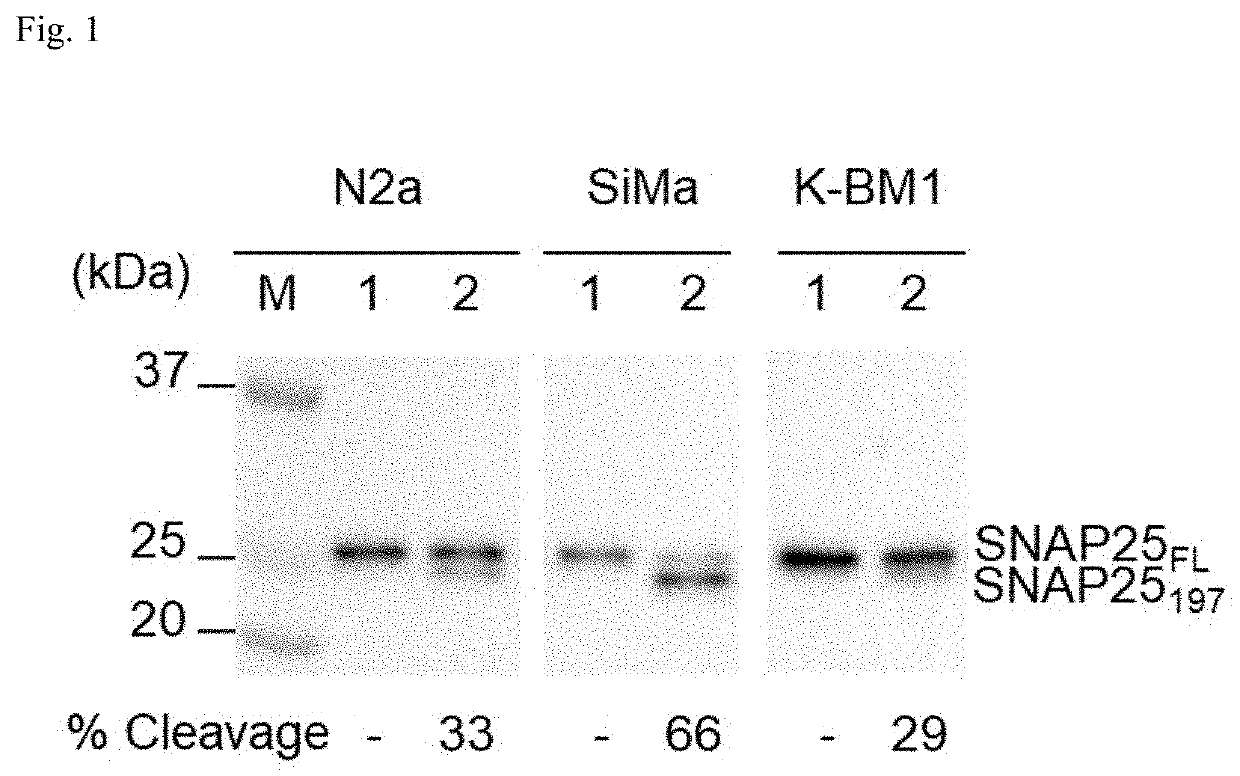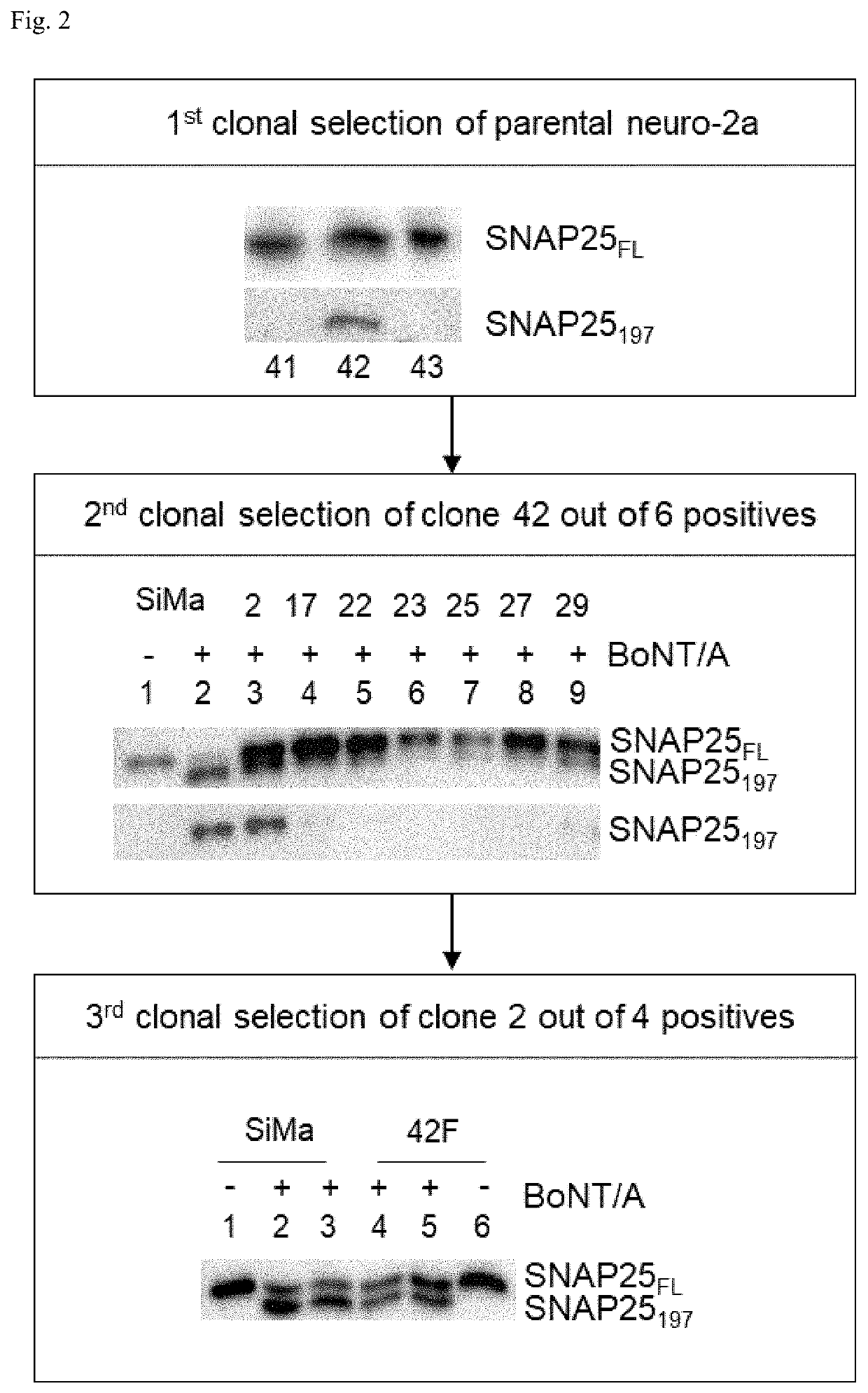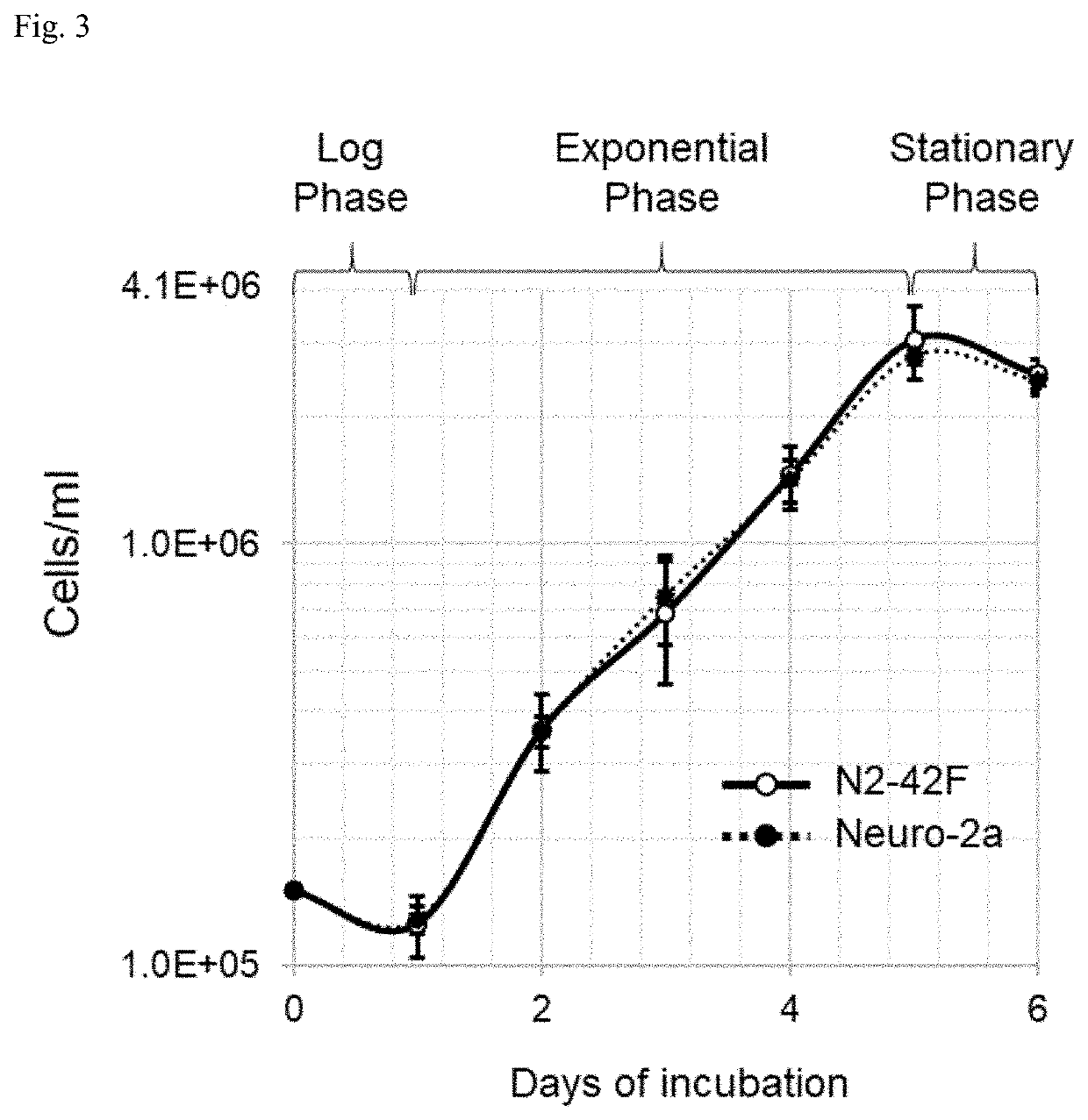Cell-based method for determining an activity of botulinum toxin
a cell-based method and botulinum toxin technology, applied in the field of cell-based methods for determining the activity of botulinum toxin, can solve the problems of accurately and reproducibly quantifying the biological potency of bont/a
- Summary
- Abstract
- Description
- Claims
- Application Information
AI Technical Summary
Benefits of technology
Problems solved by technology
Method used
Image
Examples
example 1
of BoNT / A-Sensitive Neuronal Cell
example 1-1
Analysis of Neuronal Cell Lines for their Sensitivity to BoNT / A
[0201]Neuronal cells were seeded at 2×105 cells / well in a 24-well plate and 24 hr later, they were treated with 2 nM BoNT / A in medium indicated in Table 1 for 3 days. Total cell lysates (TCLs) were prepared using 1×RIPA, and aliquots (3.5 μg) were subjected to 12% SDS-PAGE. SNAP25FL and SNAP25197 were analyzed by Western blot using rabbit polyclonal IgG (Sigma S9684), specific for SNAP25, as described in Materials and Methods. ECL solution was formulated and optimized by AbBio Inc. Working ECL solution was prepared by mixing Sol A and Sol B in 1:1 ratio before use. Sol A and Sol B is comprised as Table 2. And sensitivity of cell lines to BoNT / A (2 nM) were represented in Table 3.
TABLE 2ECL solutionCompositionSolA0.1M Tris-HCl, pH 8.8, 2.5 mM luminol in DMSO, 4 mM 4-iodopheylboronicacid, 0.2 mM tetrabutylammonium borohydride, 2% ethylene glycol, and0.02% Triton X-100.SolB0.1M Tris-HCl, pH 8.8, 10.6 mM hydrogen peroxide, a...
example 1-2
f BoNT / A-Sensitive Neuronal Cell
[0202]Neuro-2a, SiMa and KP-N-RT-BM-1 cells were separately cultured on a 24-well plate under the same conditions as materials and method, and the cleavage phenomenon of SNAP25 protein was analyzed by Western blot analysis The results are shown in FIG. 1. The extents of SNAP25 cleavage were estimated about 33%, 66%, and 29% for neuro-2a, SiMa, and K-BM1 cells, respectively.
[0203]Neuro-2a was further used for clonal selection over K-BM1 for the following reason. Firstly, the in vivo potency of BoNT / A, which is conventionally measured by mouse lethality (i.e. mouse LD50), could be better recapitulated with mouse cell line. In fact, neuro-2a is a mouse cell line, but K-BM1 is a human cell line. Secondly, K-BM1 tends to grow at a much slower rate than neuro-2a (data not shown). It should be noted that the population doubling time of SiMa cells, a human neuroblastoma cell line, is reported to be 34 to 100 hrs (DSMZ ACC-164). Thirdly, neuro-2a cells appear ...
PUM
| Property | Measurement | Unit |
|---|---|---|
| population doubling time | aaaaa | aaaaa |
| molecular weight | aaaaa | aaaaa |
| molecular weight | aaaaa | aaaaa |
Abstract
Description
Claims
Application Information
 Login to View More
Login to View More - R&D
- Intellectual Property
- Life Sciences
- Materials
- Tech Scout
- Unparalleled Data Quality
- Higher Quality Content
- 60% Fewer Hallucinations
Browse by: Latest US Patents, China's latest patents, Technical Efficacy Thesaurus, Application Domain, Technology Topic, Popular Technical Reports.
© 2025 PatSnap. All rights reserved.Legal|Privacy policy|Modern Slavery Act Transparency Statement|Sitemap|About US| Contact US: help@patsnap.com



